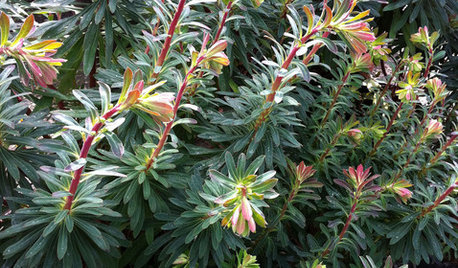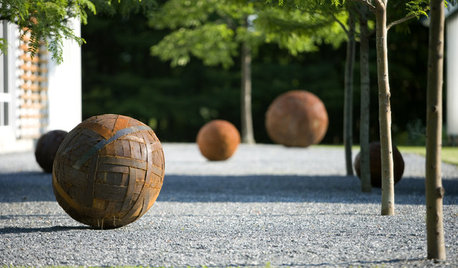Asiatic Maple Study for Spring Hardiness
sbeuerlein
16 years ago
Related Stories

EARTH DAY5 Ideas for a More Earth-Friendly Garden
Consider increasing the size of garden beds, filtering rainwater and using plants to reduce energy use
Full Story
TREESHow to Buy Healthy Trees and Shrubs
A healthy young plant with a strong form is more likely to do well in your yard. Here’s what to look for at the nursery
Full Story
GARDENING GUIDESGreat Design Plant: Euphorbia
The daring colors and low water needs of this tropical plant make it a favorite for injecting life into tired landscapes year-round
Full Story
LIFEHard Winter? 9 Ways to Battle Cabin Fever
We know a lot of you are trapped where it just won’t stop snowing. Here are some ways to survive
Full Story
GARDENING GUIDES6 Plants That Beat Butterfly Bush for the Wildlife Draw
It's invasive, a nonnative and a poor insect magnet. Check out these better alternatives to butterfly bush in the garden
Full Story
GARDENING GUIDESGarden Myths to Debunk as You Dig This Fall and Rest Over Winter
Termites hate wood mulch, don’t amend soil for trees, avoid gravel in planters — and more nuggets of garden wisdom
Full Story
NATIVE PLANTS5 Ways to Keep Your Native Plant Garden Looking Good All Year
It’s all about planning ahead, using sustainable practices and accepting plants as living organisms
Full Story
LANDSCAPE DESIGNWhat Kind of Gardener Are You? Find Your Archetype
Pick from our descriptions to create a garden that matches your personality and tells your story
Full Story
GARDENING GUIDES8 Native Shrubs for Year-Round Bird Feeding
It’s not just about berries. These plants provide insects for birds and seasonal interest for gardeners
Full Story
SAVING WATERXeriscape Gardens: How to Get a Beautiful Landscape With Less Water
Conserve water and make gardening much easier with the xeriscape approach’s 7 principles
Full StoryMore Discussions






Embothrium
sbeuerleinOriginal Author
Related Professionals
Fort Lee Landscape Architects & Landscape Designers · Havre de Grace Landscape Architects & Landscape Designers · New Mexico Landscape Architects & Landscape Designers · Edmond Landscape Contractors · Braintree Landscape Contractors · East Haven Landscape Contractors · Fort Worth Landscape Contractors · La Verne Landscape Contractors · Pompano Beach Landscape Contractors · The Woodlands Landscape Contractors · Vacaville Landscape Contractors · Wheat Ridge Landscape Contractors · Peoria Fence Contractors · Naperville Fence Contractors · Yorba Linda Fence Contractorsconifers
kaydye
myersphcf
picea
conifers